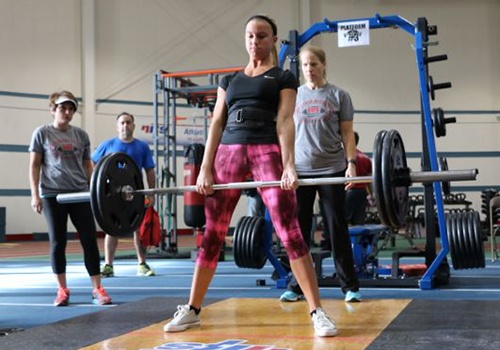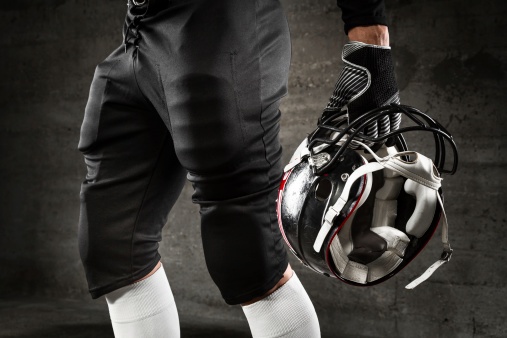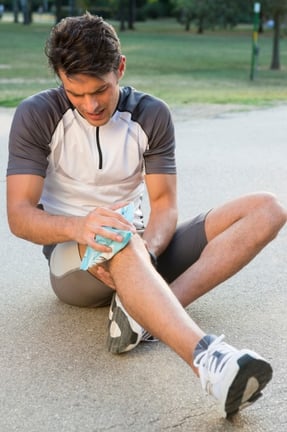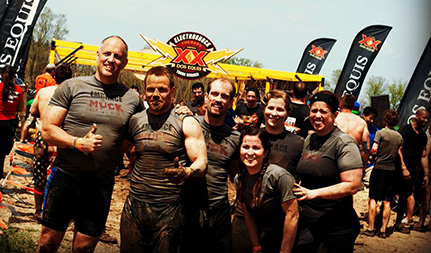 Grip strength is quite a conundrum in the fitness industry. It is so often called upon during training, yet grip-strength training itself can be overlooked.
Grip strength is quite a conundrum in the fitness industry. It is so often called upon during training, yet grip-strength training itself can be overlooked.
Many people don’t even think to train grip strength, or they don’t think that grip training will benefit them. Have you ever had trouble opening a jar or a can? Have you ever dropped a bag of groceries while trying to carry in every single bag from your car (like I do every Saturday)? Now do you think grip training might benefit you?
How Can a Better Grip Help You?
Any activity that involves holding something is going to require grip strength to some degree. Here are a few activities that may or may not come to mind when you think grip strength.
- Golfing: When playing golf, every shot you take requires you to hold a club. When holding the club, it pays to have a tight grip. Why? When you hit the ball, there is a transfer of energy from your hands to the club, and from the club to the ball. To get all of the energy from your hands to the club and the ball, you need to allow for as little movement of the club as possible when striking the ball. Grip strength is required to minimize the movement of the club upon striking the ball.
- Carrying a suitcase: Whenever you carry anything, you need grip strength. This usually isn’t a concern when the item you are carrying is light, such as a book or a cup. However, an item like a jam-packed suitcase can really test your grip when you are running through the airport to catch your plane. And if you work grip strength exercises into your workout routine, you can catch that plane and make it to family Christmas on time!
- Picking up a heavy object: This one seems like common sense, right? That’s because it is. When lifting a heavy object, such as a piece of furniture, grip strength is what keeps that object from crashing to the ground. You may have very strong legs, arms, and back, but if your grip is too weak to hold the object, you can’t move it!
So how can you train your grip to be stronger and have more endurance? There are many different ways, and here are a few (for more exercises, see this article):
- Using a thicker bar: A larger object is harder to hold onto than a smaller object. Therefore, a thicker barbell will be harder to hold onto than a thinner barbell. You can incorporate a thicker bar into your normal weightlifting routine by substituting it into every exercise you would normally do with a regular bar. Don’t have access to a thick bar? You can create a thicker bar. All you need is a couple of towels. Just wrap them around the bar to the thickness you desire, and you’re ready to go! (CAUTION: Be careful and use a spotter when weightlifting. A new technique means you will need to take time to get used to it.)
- Plate pinches and flips: If you’re lucky, your gym will have bumper weight plates (and yes, we have plenty here at the NIFS Fitness Center!). These work great for either plate pinches or flips. In a plate pinch, you pick up a bumper plate between your thumb and your other four fingers, and you either stand still to go for time, or you can walk with them and try to go for distance. In a plate flip, you grip the plate in the same way as you would for a pinch, and you do a half flip, catching the side of the plate that was just facing the ground. (Again, use caution when doing these exercises. These plates can be heavy, and if the exercise is done incorrectly, somebody could get hurt.)
- Dead hangs: For this, all you need is a pull-up bar. From a pull-up position, just hang freely from the bar for as long as you can. This will test your grip strength endurance, which is very functional for things like carries and holds.
***
This blog was written by Aaron Combs, NSCA CSCS and Health/Fitness Instructor. To find out more about the NIFS bloggers, click here.

 The fitness center floor was transformed into a makeshift coliseum so all could witness the battles that took place on those power racks and platforms. One could easily learn a great deal about the art of powerlifting, but I witnessed some rather big life lessons on display that were just as powerful as our two champions!
The fitness center floor was transformed into a makeshift coliseum so all could witness the battles that took place on those power racks and platforms. One could easily learn a great deal about the art of powerlifting, but I witnessed some rather big life lessons on display that were just as powerful as our two champions! 
 At times you may hear somebody at the gym or fitness center saying, “I don’t want to look like a bodybuilder,” or “I don’t want to be a powerlifter.” That’s great! That person knows their goals and also what they want to avoid. However, don’t let your specific goals cause you to have myth-generated fears of certain exercises.
At times you may hear somebody at the gym or fitness center saying, “I don’t want to look like a bodybuilder,” or “I don’t want to be a powerlifter.” That’s great! That person knows their goals and also what they want to avoid. However, don’t let your specific goals cause you to have myth-generated fears of certain exercises.  We are less than a month away from the Second
We are less than a month away from the Second 
 In NFL and college football, each week, a star player is hit with a sidelining injury. Possibly lost for multiple weeks, months, or at worst, the whole season. Injuries that are usually the result of bad luck or not being as physically prepared as they could have been. Hopefully your team, **knock on wood**, does not or will not have to deal with this at any point during their season. My team, my beloved
In NFL and college football, each week, a star player is hit with a sidelining injury. Possibly lost for multiple weeks, months, or at worst, the whole season. Injuries that are usually the result of bad luck or not being as physically prepared as they could have been. Hopefully your team, **knock on wood**, does not or will not have to deal with this at any point during their season. My team, my beloved  As you can see, progression of strength (and power with other lifts) has to be maintained year round. This goes for all athletes throughout their seasons. If they want to continue to improve, they must prevent the loss. It is as important of a cycle of training as any. Without a properly structured in-season maintenance phase, you will be starting from the same place every time you start a new offseason training program.
As you can see, progression of strength (and power with other lifts) has to be maintained year round. This goes for all athletes throughout their seasons. If they want to continue to improve, they must prevent the loss. It is as important of a cycle of training as any. Without a properly structured in-season maintenance phase, you will be starting from the same place every time you start a new offseason training program.
 Okay, so you’ve been successful in your first two phases of developing your new workout program. You have progressed in your
Okay, so you’ve been successful in your first two phases of developing your new workout program. You have progressed in your  One of the most important elements of performance and exercise is rest, and it’s also one of the hardest things to do! According to
One of the most important elements of performance and exercise is rest, and it’s also one of the hardest things to do! According to  When you think of the term “economy,” what is the first thing that comes to mind? Money would probably be number one, and maybe government and the idea of debt would more than likely come to mind next. There is another economy that should be as well known, and that is your training economy. Simply put, your training economy is the rate of return that you get from the methods and practices of your current training program.
When you think of the term “economy,” what is the first thing that comes to mind? Money would probably be number one, and maybe government and the idea of debt would more than likely come to mind next. There is another economy that should be as well known, and that is your training economy. Simply put, your training economy is the rate of return that you get from the methods and practices of your current training program.  I have witnessed and been a part of a growing trend in fitness these days: “If it’s not hurting, it’s not working,” and the end of a workout consists of you lying in a pool of sweat unable to move for a few minutes. What I see are mainly poorly coached high-intensity movement jamborees with little concern for proper progressions, obsessions to complete extreme events such as marathons and mud runs, and a great deal of overtraining.
I have witnessed and been a part of a growing trend in fitness these days: “If it’s not hurting, it’s not working,” and the end of a workout consists of you lying in a pool of sweat unable to move for a few minutes. What I see are mainly poorly coached high-intensity movement jamborees with little concern for proper progressions, obsessions to complete extreme events such as marathons and mud runs, and a great deal of overtraining.